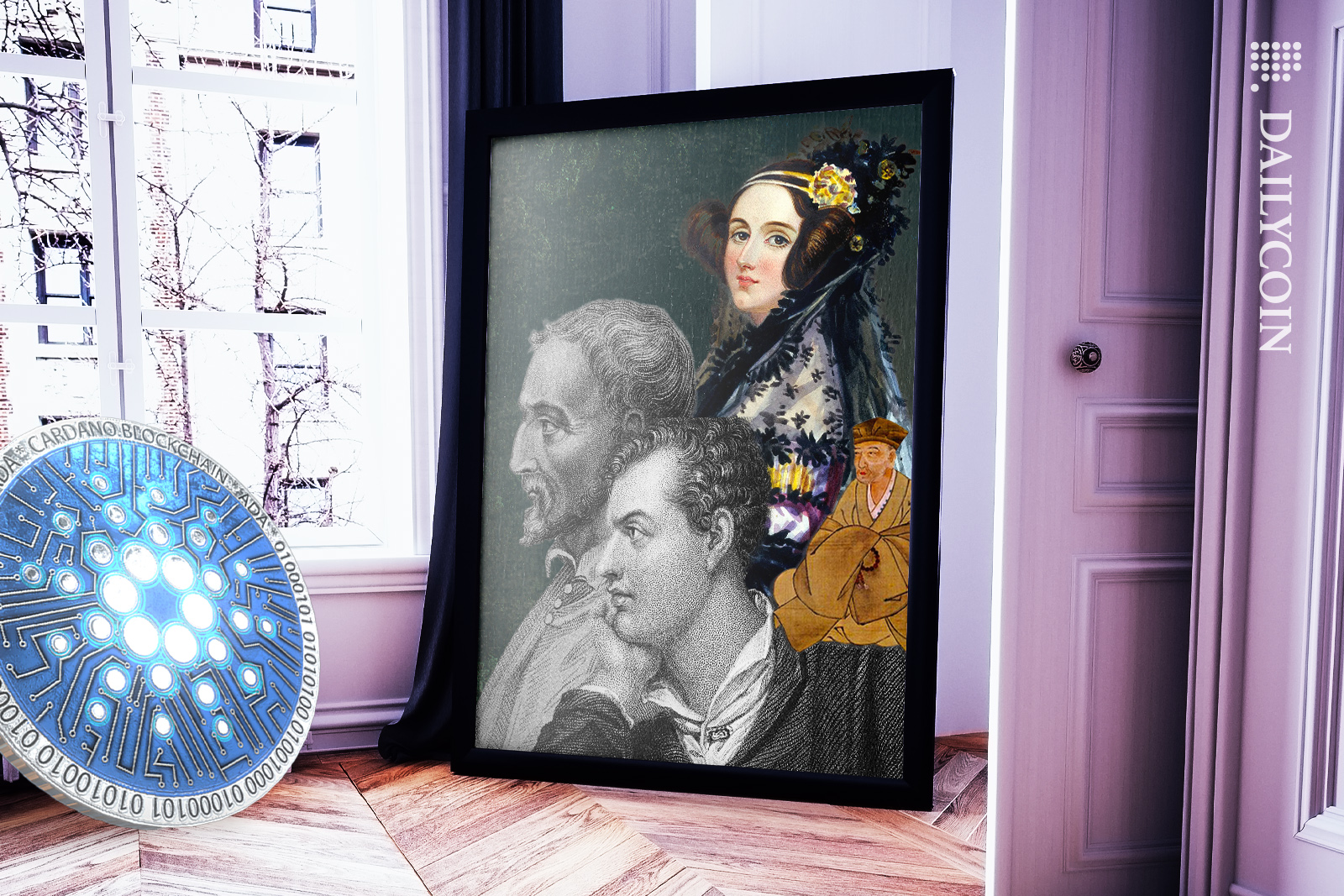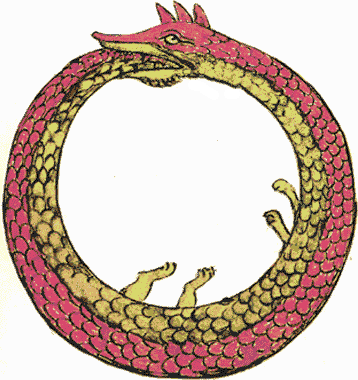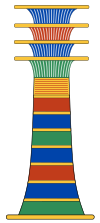
Whatever you might think about the Cardano blockchain, you must admit that Charles Hoskinson has style.
One of the consistent trends within the ADA universe, the name of every protocol, event, and milestone in the ecosystem is drawn from a rich cultural background. These deliberate choices help to add a bit of color and excitement to what can be a tech-heavy and inaccessible chain.
Who and what inspires Cardano’s clever and intriguing name selections? Is there a genuine link between the protocols and their namesakes, or are Emurgo and Input Output Global (formerly IOHK) just being dramatic for drama’s sake?
Table of Contents
Why are Cardano’s Names So Special?
If you’ve been following the Cardano blockchain for a while, you’re probably already well aware that the network and community are fiercely proud of the chain’s academic origins. Unlike rival Layer 1s like Ethereum (ETH), Cardano is the world’s first peer-reviewed blockchain born from academic research.
Sponsored
While other networks give their milestone events trendy names like Ethereum’s Merge, Surge, and Splurge or Solana’s Firedancer, Cardano looks to the past. All the central pillars of Cardano’s ecosystem are named after key figures from scientific history and legendary myths.
Sponsored
This arguably adds a sense of grandeur to the network and respects the cultural pioneers who revolutionized mathematics, laying the foundations that allow blockchain technology to exist in the first place.
Historical Cardano Names
Charles Hoskinson, the Cardano Foundation, and Input-Output Global have put plenty of thought into their naming process and selection, but this doesn’t always get recognized immediately by the Cardano community. For example, many ADA bulls weren’t even aware that the network itself was named after a 16th-century Italian polymath.

Who are the historical characters that inspired the Cardano roadmap?
Gerolamo Cardano
Author of over 200 scientific works, Gerolamo Cardano was a widely celebrated Italian mathematician, physician, and philosopher. Cardano is credited with being one of the first European mathematicians who systematically used negative numbers and is widely considered one of the key figures in Italian Renaissance mathematics.
Fascinated by the study of probability, it’s easier to see why Hoskinson and his team named their Proof-of-Stake network after the storied mathematician. In PoS chains, holding more native tokens, in this case, ADA, increases your chances of being randomly selected to create the chain’s next block and earn rewards.
Cardano was also known for his love of poetry, gambling, and a fierce rivalry with fellow mathematician Niccolò Fontana Tartaglia.
Ada Lovelace
Namesake of Cardano’s native token, ADA, Ada Lovelace was an English mathematician best known for her considerable work on Charles Babbage’s proposed mechanical computer. Lovelace saw the machine’s potential to be used for functions beyond simple calculations and birthed a vast range of theoretical work that founded the basis of today’s computer programming.
Ada Lovelace is credited with writing the G Annex algorithm, making her the world’s first computer programmer in 1843.
George Gordon Byron
Cardano’s first era of development was named after none other than Ada Lovelace’s father himself, Lord George Gordon Byron. Byron was a British poet and politician best known for his satirical poem Don Juan.
The Byron development era represented Cardano’s beginnings, including the birth of the ADA cryptocurrency and the network launch. It also witnessed the creation of Cardano’s two pioneering wallets, Daedalus and Yoroi.
Percy and Mary Shelley
The next stage of Cardano’s development was named after Percy and Mary Shelley, both close personal friends of Lord Byron. The Shelley Era handled Cardano’s first forays into true decentralization and autonomy.
While unconfirmed, this choice of name was perhaps inspired by a competition between Percy, Mary, and Lord Byron over who could write the best horror story. Mary Shelley’s classic tale, Frankenstein, was originally published anonymously, with its success largely owing to the quality of the literature.
We can draw parallels here to the Cardano network during the Shelley era, which optimized decentralization. During this period, Cardano emerged from the lab, so to speak, and deployed staking services. Cardano could now stand on two feet, powered by its decentralized staking pools.
Joseph Goguen
Here, we jump forward several centuries into more modern times, bringing us the Goguen era and its namesake, Joseph Goguen. Born in the United States in 1941, Joseph Goguen was a computer scientist who studied algebraic semantics.
Gogeun is best known for developing the K Framework, a tool for designing and modeling programming languages. His work laid a foundation for the development of Plutus and is a big part of what makes Cardano smart contracts so secure.
As such, Cardano’s Goguen era focused on the roll-out of smart contracts on the network and opened the doors to Web 3 blockchain platforms like DeFi and NFT dApps on Cardano.
Matsuo Bashõ
Back into the past, we go! Cardano’s Basho era was named after a Japanese poet widely considered one of the masters of Haikus, Matsuo Bashõ.
Designed to communicate ideas, emotions, and wisdom in three succinct phrases, haikus are the epitome of efficiency. It’s little wonder why the Hoskinson and Cardano team named a development period dedicated to scaling the network and improving its throughput after the Japanese maestro.
Voltaire (François-Marie Arouet)
Cardano’s final development era, Voltaire, deals with the future of the network and its on-chain governance. François-Marie Arouet, better known as Voltaire, was a French writer and philosopher who rose to dominance during Europe’s Age of Enlightenment.
Famously critical of religion and slavery, Voltaire was a staunch advocate of freedom of speech and the separation of church and state. By naming Cardano’s final development era after the French philosopher, Hoskinson sets a precedent for fairness and the transparent governance of the Cardano network.
Mythical Cardano Names
Moving away from historical figures and wizened old philosophers, many of the Cardano ecosystem’s names are somewhat legendary. Many of the network’s underlying technology is named after myths and legends, adding a layer of grandeur to the Cardano blockchain.
Ouroboros
Cardano’s open-source Proof-of-Stake validation mechanism, Ouroboros, is named after a universal symbol for eternity and the circle of life.

Ouroboros symbolism is used worldwide, with depictions showing the serpent eating its tail across Chinese, Greek, and Egyptian mythology. Like the consistently regenerating snake, Cardano’s consensus mechanism is designed to support and provide a stable platform for Cardano users continually.
The Ouroboros mechanism has spawned several different iterations with mythologically-inspired names, such as Ouroboros Chronus.
Hydra
The Hydra was a Greek mythological monster made famous by Homer’s Illiad, with an endless number of heads. Anytime great heroes like Hercules would sever one of the beast’s heads; two more would grow back in place.
Of course, within the Cardano ecosystem, Hydra means something quite different. Hydra Heads, or state channels, are off-chain channels between wallets parallel to Cardano’s main chain. Taking these transactions off the mainnet reduces network congestion, boosting Cardano’s scalability.
Daedalus
The original Cardano blockchain wallet, Daedelus, is named after the greatest inventor of Ancient Greece. The Daedalus Wallet is an impressive feat of technology, allowing users to run a full Cardano node within their own computer and ensuring the network is truly decentralized.
Daedalus was best known for creating the Labrinth that housed the Minotaur and the Wings of Icarus, which allowed his son to fly. However, as is often the case in Greek tragedies, the Wings eventually led to Icarus’ doom.
Denying his father’s instructions, Icarus flew too close to the sun, melting the wax that held the wings together and plummeting to his death.
DJED
Crossing the Mediterranean, our final Cardano symbolism investigation brings us to the shifting sands of Egypt. Named after the Egyptian symbol of stability, we sincerely hope that Cardano’s first native stablecoin protocol lives up to its namesake.

The DJED stablecoin protocol is named after Djed, an Egyptian pillar that represents the spine of Osiris, the Egyptian God of the Afterlife. The protocol’s other coin, SHEN, symbolizes completeness, infinity, and protection.
On the Flipside
- While Cardano’s naming patterns are clever and cultured, they aren’t easily understandable to people outside the Cardano ecosystem. For example, even if you weren’t familiar with Ethereum’s ‘Merge,’ it’s easy to imagine what it was about.
Why This Matters
Academic theory and cultural history are important to Cardano. Knowing who and what inspired its different development Cardano eras and protocols will help the ADA faithful stay true to the fundamental beliefs of the ecosystem.
FAQs
Cardano is a cryptocurrency, not a stock. The ticker represents the cryptocurrency’s native token, ADA.
Cardano was founded by Charles Hoskinson and developed by a large team of researchers and scientists at Input Output Global.
You can buy Cardano (ADA) and a wide range of other crypto assets like Bitcoin (BTC) on top cryptocurrency exchanges like Binance and Coinbase.
